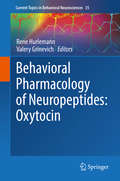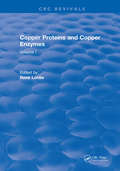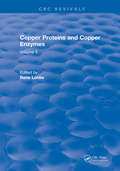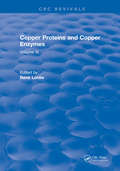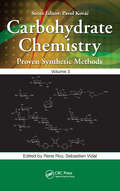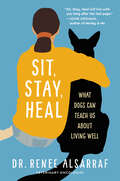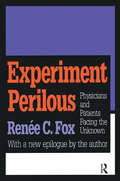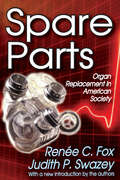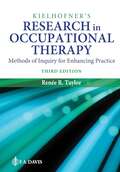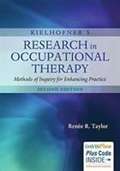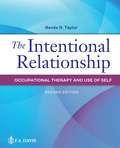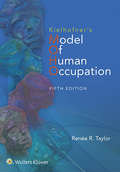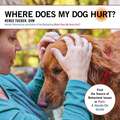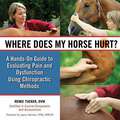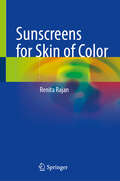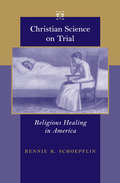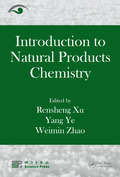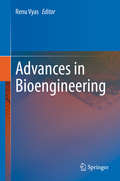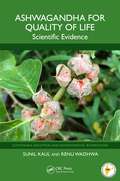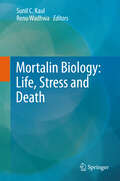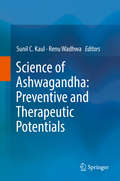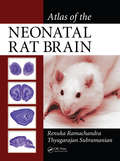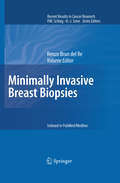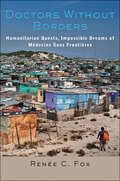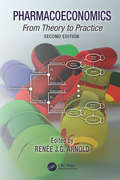- Table View
- List View
Behavioral Pharmacology of Neuropeptides: Oxytocin (Current Topics in Behavioral Neurosciences #35)
by Rene Hurlemann Valery GrinevichThis volume collects cutting-edge expert reviews in the oxytocin field and will be of interest to a broad scientific audience ranging from social neuroscience to clinical psychiatry. The role of the neuropeptide oxytocin in social behaviors is one of the earliest and most significant discoveries in social neuroscience. Influential studies in animal models have delineated many of the neural circuits and genetic components that underlie these behaviors. These discoveries have inspired researchers to investigate the effects of oxytocin on brain and behavior in humans and its potential relevance as a treatment for psychiatric disorders including borderline personality disorder and autism and schizophrenia spectrum disorders. In fact, there is no established social psychopharmacology in Psychiatry, and oxytocin can be seen as the first endogenous agent specifically addressing social-cognitive impairment in psychiatric disorders, with animal research suggesting that it could be especially efficient in the early postnatal period. From a human perspective, it is crucial to understand more precisely who can benefit from potential oxytocin-related treatments, which outcome measures will best represent their effects, how they should be administered, and what brain mechanisms are likely involved in mediating their effects. This type of “precision medicine” approach is in line with the research domain criteria defined by the U.S. National Institute of Mental Health.
Copper Proteins and Copper Enzymes: Volume I
by Rene LontieThese volumes of Copper Proteins and Copper Enzymes are intended to describe the contemporary spectroscopy and other biophysical chemistry now being applied to copper proteins in order to determine the structures of their active sites. Several chapters of the treatise describe the functional understanding which is emerging from the new work. The authors are all major contributors to research progress on copper proteins and the volumes will be found to be definitive and authoritative.
Copper Proteins and Copper Enzymes: Volume II
by Rene LontieThese volumes of Copper Proteins and Copper Enzymes are intended to describe the contemporary spectroscopy and other biophysical chemistry now being applied to copper proteins in order to determine the structures of their active sites. Several chapters of the treatise describe the functional understanding which is emerging from the new work. The authors are all major contributors to research progress on copper proteins and the volumes will be found to be definitive and authoritative.
Copper Proteins and Copper Enzymes: Volume III
by Rene LontieThese volumes of Copper Proteins and Copper Enzymes are intended to describe the contemporary spectroscopy and other biophysical chemistry now being applied to copper proteins in order to determine the structures of their active sites. Several chapters of the treatise describe the functional understanding which is emerging from the new work. The authors are all major contributors to research progress on copper proteins and the volumes will be found to be definitive and authoritative.
Carbohydrate Chemistry: Proven Synthetic Methods, Volume 3 (Carbohydrate Chemistry Ser.)
by Sebastien Vidal Rene RoyVolumes in the Proven Synthetic Methods Series address the concerns many chemists have regarding irreproducibility of synthetic protocols, lack of characterization data for new compounds, and inflated yields reported in chemical communications-trends that have recently become a serious problem.Featuring contributions from world-renowned experts and
Sit, Stay, Heal: What Dogs Can Teach Us About Living Well
by Renee Alsarraf“Written with grace and emotional honesty, Sit, Stay, Heal will live with you long after the last page.”— John Grogan, bestselling author of Marley & MeFor more than two decades, esteemed veterinary oncologist Dr. Renee Alsarraf treated cancer in her beloved canine patients. Then, at age fifty-one, she was diagnosed with cancer herself.Sit, Stay, Heal: What Dogs Can Teach Us About Living Well is Dr. Renee’s unforgettable testament to the extraordinary healing nature of dogs. Every day in her veterinary practice, she bears witness to the undeniable bond between pets and their people. However, while we are busy teaching them to “sit” and “stay,” they have their own, more profound, lessons to impart. In Sit, Stay, Heal, we meet Cosmo, the golden retriever who arrives at Renee’s office just before his fourteenth family vacation to the beach; Daisy, the cocker spaniel, an emotional support dog for a special needs child; and Franny, the bloodhound, a police dog who wasn’t ready to retire from the force. Then there’s Dr. Renee’s own dog Newtie, who falls ill when she needs him most.Our dogs are wise in ways humans are not. For Dr. Renee, it was her patients—those furry, four-legged, slobbering animals—who seemed to uniquely understand her difficult journey and who showed her the true power of positivity and unconditional love. Full of life lessons and healing metaphors, perfect dogs and their imperfect humans, Sit, Stay, Heal is a captivating, heartwarming story for dog lovers far and wide.
Experiment Perilous: Physicians and Patients Facing the Unknown
by Renee C. Fox"This is a brilliant work of lasting value to both sociology and anthropology by a person combining the talent of keen observer with the highest level of theoretical sophistication. . . a major contribution to our understanding of the nature and structure of a significant social situation."--David M. Schneider, The University of Chicago. Experiment Perilous covers a three-year period In the lives of the patients and physicians in a small and intense hospital community. It represents a pioneering, participant-observation-based study of a hospital ward as a social system. In a new epilogue. Fox provides a historical and sociological account of phenomena relevant to clinical investigations that she has observed in her forty-five years as a sociologist of medicine.
Spare Parts: Organ Replacement in American Society
by Renee C. FoxSpare Parts examines major developments in the field of organ replacement that occurred in the United States over the course of the 1980s and the beginning of the 1990s. It focuses upon significant medical and social changes in the transplantation of human organs and on the development and clinical testing of the Jarvik-7 artificial heart, with special emphasis on how these biomedical events were related to the political, economic, and social climate of American society.Part I examines the important biomedical advances and events in organ transplantation and their social and cultural concomitants. In Part II, the focus shifts to the story of the rise and fall of the Jarvik-7 artificial heart in the United States, its relation to American social institutions and cultural patterns, and its bearing on social control issues associated with therapeutic innovation and the patient-oriented clinical research it entails. Part III is a personal conclusion, which explains why the authors left the field of organ transplantation after so many years.Spare Parts is written in a narrative, ethnographic style, with thickly descriptive, verbatim, and atmospheric detail. The primary data it is based upon includes qualitative materials, collected via participant observation, interviews in a variety of medical milieu, and content analysis of medical journals, newspapers, and magazine articles, and a number of television transcripts. The new introduction provides an overview of some of the recent developments in transplantation and also underscores how tenacious many of the patterns associated with organ replacement have been. Spare Parts should be read by all medical professionals, sociologists, and historians.
Kielhofner's Research In Occupational Therapy: Methods Of Inquiry For Enhancing Practice
by Renee R. TaylorRenée Taylor and an international team of contributors carry on Gary Kielhofner’s innovative vision to demystify the research process and demonstrate that research is essential to occupational therapy practice. They present a comprehensive guide to conducting applied research in the field from qualitative, quantitative, and mixed perspectives for students and clinicians. You’ll begin with a grounding in conducting evidence-based practice in OT and an explanation of the six broad components of the research process. Then you will explore research designs, measurements, and statistical analysis for qualitative and quantitative studies. You’ll examine the steps and procedures required to conduct research and how research can be used to shape professional practice and improve patient care. Additional topics include needs assessment research, program evaluation research, mixed methods research, outcomes research for evidence-based practice, writing a literature review, and obtaining funding for research.
Kielhofner's Research In Occupational Therapy: Methods of Inquiry for Enhancing Practice (2nd Edition)
by Renee R. TaylorWith an international team of expert contributors, Renee Taylor carries on Gary Kielhofner's innovative work in the 2nd Edition of his comprehensive research methodologies text. This guide bridges the gap between theorists and practitioners. It focuses on the relevance and logic of research to provide a practical, demystified approach to conducting applied research in the field for graduate students and clinicians. You'll begin with an introduction to the nature and scope of research and its place in OT and then explore research designs, measurements, and statistical analysis for qualitative, quantitative, and mixed studies. You'll examine the steps and procedures required to conduct research and how research can be used to shape professional practice and improve patient care.
The Intentional Relationship: Occupational Therapy And Use Of Self
by Renee R. TaylorThis groundbreaking book addresses a critical aspect of the occupational therapy practice—the art and science of building effective therapeutic relationships with clients. A distinguished clinician, scientist, and educator, Renée Taylor, PhD, has defined a conceptual practice model, the Intentional Relationship Model, to identify how the client and the therapist each contribute to the unique interpersonal dynamic that becomes the therapeutic relationship. She emphasizes how therapists must act deliberately, thoughtfully, and with vigilant anticipation of the challenges and breakthroughs that have the potential to influence the course of the relationship.
Kielhofner's Model of Human Occupation: Theory and Application
by Renee TaylorUpdated throughout with new research, this 5th Edition of Kielhofner’s Model of Human Occupation (MOHO) offers a complete presentation of the most widely used model in occupational therapy today. In the new edition, author Renée Taylor preserves Dr. Kielhofner’s original voice and contributions while updating MOHO concepts and their uses in today’s practice environment. Throughout the book, readers will see a client-centered approach used to explore what motivates each individual, how they select occupations and establish everyday routines, and how environment influences occupational behavior. The 5th Edition continues to deliver the latest in MOHO theory, research, and application to practice and adds much that is new, including new case studies that show how MOHO can address the real-life issues depicted and expanded resources that enhance teaching and learning.
Where Does My Dog Hurt
by Renee TuckerA do-it-yourself method of determining when and where your dog hurts.Keep your dog pain-free and feeling and performing his best! Introducing 23 simple body checkups you can do at home on your dog. This remarkably easy-to-follow book helps you:Clear up behavior problems or training issues you may have struggled with for months.Become familiar with your dog's normal range of movement so you can prevent minor issues from becoming major.Tune in to areas of temporary or chronic discomfort so you can offer relief as needed.Solve &“mystery&” limps, gimps, and lamenesses.Save thousands of dollars by avoiding expensive diagnostics that leave you with more questions.Captain your dog's team of veterinarian, trainer, chiropractor, and other therapists with confidence.Keep your dog active and happy for more months of the year, and more years of his life.Clear, colorful anatomical illustrations and how-to photographs demonstrate each body checkup, from nose to tail. Sensible organization allows you to move purposefully and progressively when trying to pinpoint a problem, while also ensuring that it is easy to find what you need, when you need it. With considerations for all canines, of every size and breed, and the goal of optimal health and a vibrant quality of life, this practical book is for everyone who counts a dog as a friend or family member.
Where Does My Horse Hurt?
by Renee TuckerKeep your horse pain-free and performing his best!Introducing 27 simple body checkups you can do on your horse,Where Does My Horse Hurt? is a do-it-yourself method for determining when and where your horse hurts. With this easy-to-follow book, conveniently spiral-bound so you can lay it open on your tack trunk and follow the instructions as you work on your horse you will:Become familiar with your horse's normal range of movement so you can prevent minor issues from becoming major.Stay in tune with areas of temporary or chronic discomfort so you can offer relief as needed.Solve mystery or phantom lamenesses that come and go seemingly without reason.Save thousands of dollars by avoiding expensive diagnostics that rarely get you answers.Learn how to discuss potential problem areas with farriers, veterinarians, and bodyworkers.Keep your horse actively and happily in work for more months of the year, and more years of his life.
Sunscreens for Skin of Color
by Renita RajanThis book, Sunscreens for Skin of Color, provides a complete and comprehensive overview of all the aspects of sunscreens and their role in clinical practice. Tracing the evolution of sunscreens from the early days to the current exploration of plant-based sun screening agents, this book provides an in-depth update on sun protection. Chapters on UV filters, toxicology, ecological and environmental impact, and the relevance of sunscreens in the skin of color provide a balanced understanding of these essential personal care products. The book addresses the questions arising at the interface of patient-physician interaction: from what benefits sunscreens confer on the skin, to ways to circumvent potential health and environmental hazards. The unique role of sunscreens in SOC for the prevention of photo pigmentation and skin aging, the paradigm shift in sunscreen use arising from both sunscreen durability on skin, and potential for systemic absorption, and emerging questions like frontal fibrosing alopecia have been discussed in the context of sunscreen usage in the present day and age. The chapters are easy to understand, and the progressive information unfolding enables the student to assimilate the subject efficiently.
Christian Science on Trial: Religious Healing in America (Medicine, Science, and Religion in Historical Context)
by Rennie B. SchoepflinIn Christian Science on Trial, historian Rennie B. Schoepflin shows how Christian Science healing became a viable alternative to medicine at the end of the nineteenth century. Christian Scientists did not simply evangelize for their religious beliefs; they engaged in a healing business that offered a therapeutic alternative to many patients for whom medicine had proven unsatisfactory. Tracing the evolution of Christian Science during the late nineteenth and early twentieth centuries, Christian Science on Trial illuminates the movement's struggle for existence against the efforts of organized American medicine to curtail its activities.Physicians exhibited an anxiety and tenacity to trivialize and control Christian Scientists which indicates a lack of confidence among the turn-of-the-century medical profession about who controlled American health care. The limited authority of the medical community becomes even clearer through Schoepflin's examination of the pitched battles fought by physicians and Christian Scientists in America's courtrooms and legislative halls over the legality of Christian Science healing. While the issues of medical licensing, the meaning of medical practice, and the supposed right of Americans to therapeutic choice dominated early debates, later confrontations saw the legal issues shift to matters of contagious disease, public safety, and children's rights. Throughout, Christian Scientists revealed their ambiguous status as medical practitioners and religious healers. The 1920s witnessed an unsteady truce between American medicine and Christian Science. The ambivalence of many Americans about the practice of religious healing persisted, however. In Christian Science on Trial we gain a helpful historical context for understanding late–twentieth-century public debates over children's rights, parental responsibility, and the authority of modern medicine.
Introduction to Natural Products Chemistry
by Rensheng Xu Yang Ye Weimin ZhaoNatural products chemistry-the chemistry of metabolite products of plants, animals and microorganisms-is involved in the investigation of biological phenomena ranging from drug mechanisms to gametophytes and receptors and drug metabolism in the human body to protein and enzyme chemistry. Introduction to Natural Products Chemistry has collected the
Advances in Bioengineering
by Renu VyasThis book provides a single source of information on three major bioengineering areas: engineering at the cellular and molecular level; biomedical devices / instrument engineering; and data engineering. It explores the latest strategies that are essential to advancing our understanding of the mechanisms of human diseases, the development of new enzyme-based technologies, diagnostics, prosthetics, high-performance computing platforms for managing huge amounts of biological data, and the use of deep learning methods to create predictive models. The book also highlights the growing importance of integrating chemistry into life sciences research, most notably concerning the development and evaluation of nanomaterials and nanoparticles and their interactions with biological material. The underlying interdisciplinary theme of bioengineering is addressed in a range of multifaceted applications and worked out examples provided in each chapter.
Ashwagandha for Quality of Life: Scientific Evidence (Sustainable Industrial and Environmental Bioprocesses)
by Renu Wadhwa Sunil KaulThis book offers a comprehensive overview of the scientific evidence supporting the diverse health benefits of Ashwagandha. Each chapter delves into specific aspects, exploring its effects on stress management, cognitive function, physical performance, immune system support, sleep quality, and hormonal balance. Through an evidence-based approach, the text aims to bridge the gap between traditional wisdom and modern scientific understanding, presenting Ashwagandha as a promising herb for enhancing quality of life. Ashwagandha for Quality of Life: Scientific Evidence begins by highlighting the origin and botanical characteristics of Ashwagandha and explores the wide range of its traditional and modern applications. By identifying the main active compounds and their functions, readers gain insight into the herb's potential physiological effects. Further, the book investigates Ashwagandha's potential for preventing and treating COVID-19. The book is intended for general readership, herbalists, naturopaths, alternative medicine practitioners, and life science/medical students and researchers to gain a comprehensive understanding of Ashwagandha's potential in improving health and well-being, while also emphasizing the importance of quality and chemotyping for optimal benefits.
Mortalin Biology: Life, Stress and Death
by Renu Wadhwa Sunil C. KaulThe phrase "Life, stress and death" connects three terms, but is there a biological basis for that? Are there molecules that are essential to/or mediate these phenomena? This contributory volume "Mortalin Biology: Life, Stress and Death" is a remarkable compilation of the research outcomes on the stress protein mortalin, a member of heat shock 70 family of proteins. The book is unique as it describes mortalin playing essential role in life, stress response and death either from cancer, when it becomes hyperactive or from neuro-degeneration, when it becomes hypoactive. The book provides up-to-date knowledge on mortalin with respect to its discovery, structure, evolutionary conservation, function and signal transduction in different organisms in a simple, but most comprehensive way, that besides offering an enjoyable and in-depth reading, prompts the reader to ask further questions to explore this protein with new ideas, approaches and experiments. Twenty-one chapters by the world leaders on the specific areas of mortalin research throw light on its multi-functionality, potentials for biotechnology, diagnostics and therapeutic values. Avenues of mortalin biology, yet unexplored, hold immense promises for future, and reading this volume provides an easy, enthusiastic and energetic head-on start.
Science of Ashwagandha: Preventive and Therapeutic Potentials
by Renu Wadhwa Sunil C. KaulRapidly increasing aging population and environmental stressors are the two main global concerns of increasing incidence of a variety of pathologies in the modern society. The complex etiologies and pathologies cause major challenges to disease treatment. On the other hand, several herbs are known for their health-caring and disease-curing activities. Ashwagandha, a popular herb in Indian traditional home medicine, Ayurveda, has gathered increasing recognition in recent years when the chemically synthesized drugs for single target therapies showed limited success and adverse toxic effects. Ashwagandha is known as a powerful adaptogen and trusted to enhance function of the brain, reproductive system, cell-mediated immunity and increase the body's defense against disease, and possess anti-inflammatory, anticancer and anti-arthritic activities. In this book, for the first time, we provide a complete portrait on scientific understanding of the effects of Ashwagandha and its active principles for a variety of preventive and therapeutic activities.
Atlas of the Neonatal Rat Brain
by Renuka Ramachandra Thyagarajan SubramanianAtlas of the Neonatal Rat Brain provides photographic, histological illustrations of the anatomical features of the neonatal rat brain at postnatal (P) days P-1, P-7, and P-14. The sections are Nissl stained with Cresyl violet, creating photomicrographs with high resolution and clarity. The structures are directly labeled on the images, making it e
Minimally Invasive Breast Biopsies
by Renzo Brun del ReModern imaging methods have made it possible to detect breast cancer at an earlier stage than in the past. Nevertheless, a large majority of suspicious findings at screening subsequently prove to be benign. It is therefore important to be able to identify benign lesions in a manner that is reliable, tissue sparing, patient friendly, and cost-effective. More than 70% of breast biopsies can now be performed using minimally invasive procedures that meet these criteria. This book examines in detail vacuum-assisted minimally invasive breast biopsy systems (ATEC, EnCor, Intact, Mammotome and Vacora), stereotactic systems, MRI-guided procedures, and ductoscopy. Further chapters are devoted to the pathology of the breast tissue obtained using these procedures, their limitations, the implications of recent advances in breast imaging, and the results of cost-benefit analyses. The closing chapter provides a systematic review and meta-analysis of recent data.
Doctors Without Borders: Humanitarian Quests, Impossible Dreams of Médecins Sans Frontières
by Renée C. FoxAn intimate portrait of the renowned international humanitarian organization.Winner of the PROSE Award for Excellence, Sociology and Social Work of the Association of American PublishersThis study of Médecins Sans Frontières / Doctors Without Borders (MSF) casts new light on the organization’s founding principles, distinctive culture, and inner struggles to realize more fully its "without borders" transnational vision.Pioneering medical sociologist Renée C. Fox spent nearly twenty years conducting extensive ethnographic research within MSF, a private international medical humanitarian organization that was created in 1971 and awarded the Nobel Prize for Peace in 1999. With unprecedented access, Fox attended MSF meetings and observed doctors and other workers in the field. She interviewed MSF members and participants and analyzed the content of such documents as communications between MSF staff members within the offices of its various headquarters, communications between headquarters and the field, and transcripts of internal group discussions and meetings. Fox weaves these threads of information into a rich tapestry of the MSF experience that reveals the dual perspectives of an insider and an observer. The book begins with moving, detailed accounts from the blogs of women and men working for MSF in the field. From there, Fox chronicles the organization’s early history and development, paying special attention to its struggles during the first decades of its existence to clarify and implement its principles. The core of the book is centered on her observations in the field of MSF’s efforts to combat a rampant epidemic of HIV/AIDS in postapartheid South Africa and the organization’s response to two challenges in postsocialist Russia: an enormous surge in homelessness on the streets of Moscow and a massive epidemic of tuberculosis in the penal colonies of Siberia. Fox’s accounts of these crises exemplify MSF’s struggles to provide for thousands of people in need when both the populations and the aid workers are in danger.Enriched by vivid photographs of MSF operations and by ironic, self-critical cartoons drawn by a member of the Communications Department of MSF France, Doctors Without Borders highlights the bold mission of the renowned international humanitarian organization even as it demonstrates the intrinsic dilemmas of humanitarian action.
Pharmacoeconomics: From Theory to Practice
by Renée J.G. ArnoldIn this era of finite budgets, healthcare rationing, medication shortages, and the global aging and burgeoning of populations, numerous stakeholders in the healthcare arena must understand the basic principles of pharmacoeconomics and how these may be correctly applied to facilitate drug development, rationing, patient segmentation, disease management, and pricing model development. Pharmacoeconomics: From Theory to Practice, Second Edition focuses on how to more efficiently and rationally leverage these healthcare resources, not by restricting access to necessary services, but by using them more efficiently. This updated volume arms decision makers with the tools they need to make wise choices in an area where the stakes are extremely high—the health of the global population. Key Features: Introduces the major concepts and principles of Pharmacoeconomics Gives updated information about pharmacoeconomic models, value-based pricing, novel modelling methodologies and international utilization of these modalities in government, the pharmaceutical industry, and health care settings Demonstrates the full range of ethical and moral issues, as well as overall public health and commercial concerns that are often involved in decisions entailing pharmacoeconomic issues Presents both theory and methodology discussions, including real-world examples, in each chapter
